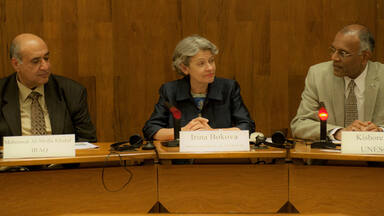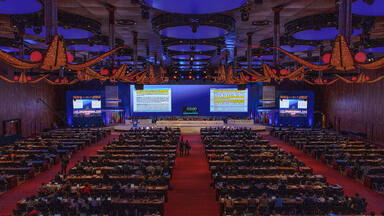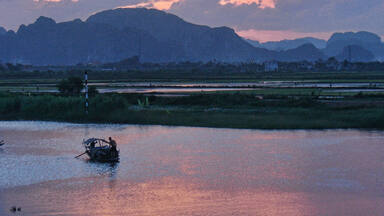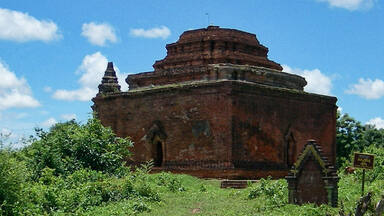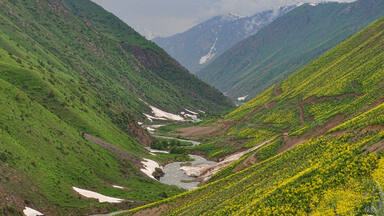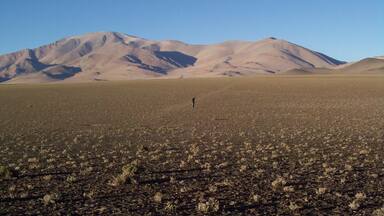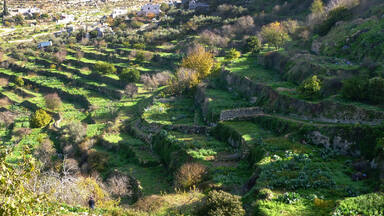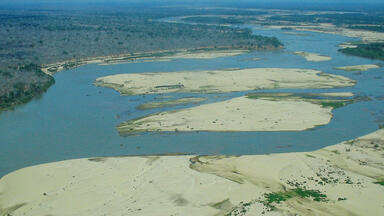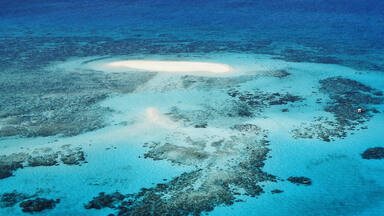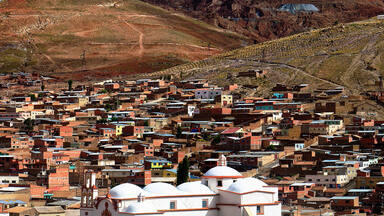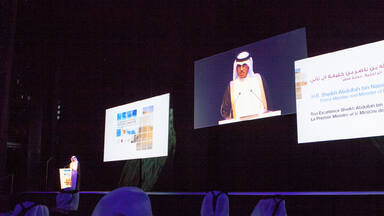Sites in Iraq, Japan, the Netherlands and Saudi Arabia inscribed on World Heritage List
Doha, 21 June – The World Heritage Committee, meeting in Doha (Qatar) under the Chair of Sheikha Al Mayassa Bint Hamad Bin Khalifa Al Thani, has today inscribed the following sites on the World Heritage List.
Erbil Citadel (Iraq) is a fortified settlement on the top of an imposing ovoid-shaped tell (a hill created by many generations of people living and rebuilding on the same spot) Located in the Kurdistan region, Erbil Governorate. A continuous wall of tall 19th century facades still conveys the visual impression of an impregnable fortress, dominating the city of Erbil. The Citadel features a peculiar fan-like pattern, dating back to Erbil’s late Ottoman phase. Written and iconographic historical records document the antiquity of settlement on the site – Erbil corresponds to ancient Arbela, an important Assyrian political and religious centre – while archaeological finds and investigations suggest that the mound conceals the levels and remains of previous settlements.
Tomioka Silk Mill and Related Sites (Japan) is an historic sericulture and silk mill complex established in 1872 in the Gunma Prefecture north west of Tokyo. Built by the Japanese Government with machinery imported from France, it consists of four sites that attest to the different stages in the production of raw silk: production of cocoons in an experimental farm; a cold storage facility for silkworm eggs; reeling of cocoons and spinning of raw silk in a mill; and a school for the dissemination of sericulture knowledge. It illustrates Japan’s desire to rapidly adopt the best mass production techniques, and became a decisive element in the renewal of sericulture and the Japanese silk industry in the last quarter of the 19th century. It marked Japan’s entry into the modern, industrialized era, and propelled it to become the world’s leading exporter of raw silk, notably to France and Italy.
Van Nellefabriek (Netherlands) was designed and built in the 1920s on the banks of a canal in the Spaanse Polder industrial zone northwest of Rotterdam. The site is one of the icons of 20th century industrial architecture, comprising a complex of factories, with facades consisting essentially of steel and glass, making large-scale use of the curtain wall principle. It was conceived as an “ideal factory”; open to the outside world, whose interior working spaces evolved according to need, and in which daylight was used to provide pleasant working conditions. It embodies the new kind of factory that became a symbol of the modernist and functionalist culture of the inter-war period and bears witness to the long commercial and industrial history of the Netherlands in the field of importation and processing of food products from tropical countries, and their industrial processing for marketing in Europe.
Historic Jeddah, the Gate to Makkah (Saudi Arabia) is situated on the eastern shore of the Red Sea. From the 7th century A.D. it was established as a major port for Indian Ocean trade routes, channeling goods to Mecca. It was also the gateway for Muslim pilgrims to Mecca who arrived by sea. These twin roles saw the city develop into a thriving multicultural centre, characterized by a distinctive architectural tradition, including tower houses built in the late 19th century by the city’s mercantile elites, and combining Red Sea coastal coral building traditions with influences and crafts from along the trade routes.
The 38th session of the World Heritage Committee began on 15 June and will continue through to 25 June.
Documents
UNESCO Media Contact in Doha
Sue Williams,
+33(0)6 15 92 93 62 or +974 503 16609
s.williams@unesco.org
Follow @UNESCO on Twitter using the hashtag #WorldHeritage
Follow us on Facebook


